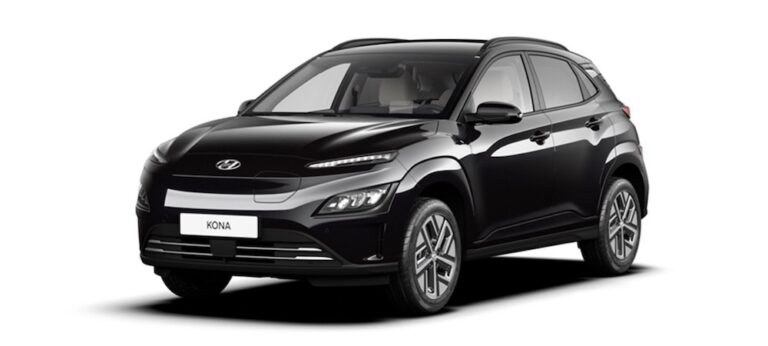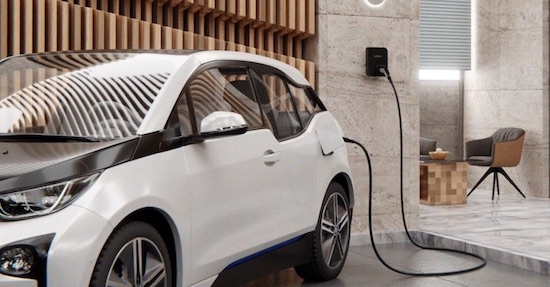Overview
Volkswagen AG, the Germany automotive group is one of the leading automotive companies in the global electric vehicle (EV) industry. Volkswagen has committed to an investment up to Euro 30 billion by 2023. It aims to sell 3 million electric vehicles by 2025 and launch up to 70 new EV models over the next 10 years.
With the launch of its electric vehicle ID. Family, VW is fast cementing a dominant position to become the world’s largest electric vehicle (EV) manufacturer by 2028, with the automotive behemoth planning to manufacturer 22 million electric vehicles.
The automotive company currently has a number of battery-electric vehicles (BEVs) and plug-in hybrid electric vehicles (PHEVs) on sale, to include:
- The all-electric VW ID.3
- The all-electric VW ID.4
- The all-electric VW ID.4 GTX
- The all-electric VW ID.5
- The all-electric VW ID.5 GTX
- The all-electric VW ID.7
- The all-electric VW e-up!
- VW Touareg R Plug-In Hybrid
- VW Passat GTE Plug-In Hybrid
- VW Passat GTE Plug-In Hybrid Estate
- VW Golf 8 Plug-In Hybrid
- VW Tiguan eHybrid
Electric Cars: The Basics
For those of you new to zero-emission electric driving, we recommend a read of the following articles:
Sign up to the e-zoomed Electric Living newsletter
The Volkswagen Touareg R PHEV SUV
The Volkswagen Touareg SUV (4X4) was introduced in 2002. The vehicle has been named after the nomadic people from northern Africa, the Tuareg people. The Touareg shares its platform with the Porsche Cayenne and the Audi Q7 SUVs. The Touareg R plug-in hybrid electric vehicle (PHEV) was revealed in early 2020.
The Volkswagen Touareg plug-in electric SUV has a 14.3 kWh onboard EV battery, with a claimed zero-tailpipe emission electric range up to 31 miles (WLTP certified). Not hugely impressive, but typical of many PHEVs in this segment.
Of course, the real-world pure electric range will be lower, and possibly closer to 25 miles. The real-world EV range is impacted by a number of factors, to include: driving profile, speed, passenger load, weather, road condition, wheel size, etc.
An electric range of 25 miles may not seem much, but given that the majority of motorists in the UK drive 30 miles per day, the electric range is sufficient to help lower driving costs per mile. Depending on where the EV is charged, the driving costs per mile can be as low 5 pence, far cheaper than calling on the internal combustion engine (ICE).
The use of the electric mode also helps improve the overall efficiency of the electric vehicle. VW claims a fuel economy up to 122.8 mpg. Of course, real-world fuel economy will be lower than the claimed figures, but the fuel economy of the PHEV will be far better, compared to the conventional combustion engine variant (34 mpg).
To leverage the benefits of electric driving, having a fully charged EV battery is imperative. The PHEV is not compatible with DC charging (not all plug-in electric cars are capable of DC rapid charging). In all probability, on most occasions, the EV will be charged overnight at home.
We at e-zoomed recommend the use of a dedicated EV charger for home charging. The single-phase easee EV charger is a good example. The PHEV can be charged up to 100% in 5 hours and 10 minutes (3.6 kW). Charging at 7.2 kW will take 2 hours and 30 minutes to fully charge the EV.
We recommend a ‘topping up’ approach to EV charging. This way, the e-mode can be used more often and regular charging is also better for the long-term maintenance of the EV battery. Volkswagen offers a warranty up to 3 years or 60,000 miles.
The four-wheel drive VW plug-in pairs a 3.0-litre TSI eHybrid petrol engine with an electric motor (100 kW). The electric vehicle delivers a maximum combined 462 PS and 700 Nm torque. The electric SUV can achieve 0-62 mph in 5.1 seconds. Pretty good, given the weight of the EV (2,468 kgs). The top speed of the EV is 155 mph. The EV benefits from instant torque, as is the case with electric cars.
The EV offers as standard a host of features and equipment, to include: lane assist, multifunction front facing camera, park assist, driver alert system, fatigue detection, digital cockpit – 12″ high resolution, electrically-operated tailgate, keyless access and more. The EV is practical and spacious for passengers. Despite the addition of the onboard EV battery, the available cargo volume is 665 L.
The electric vehicle (EV) has far lower tailpipe emissions (52g CO2/km), compared to the internal combustion engine (ICE) variant (217g CO2/km). Company-car drivers can take advantage of the lower Benefit-in-Kind (BiK-17%) tax rate for the PHEV to lower monthly bills. The plug-in hybrid electric vehicle does not qualify for the UK government plug-in car grant (PiCG).
Bottom-line, electric driving is good for the environment and the wallet. You can lease electric vehicles (EVs) via e-zoomed at very competitive prices!
| PROS | CONS |
|---|---|
| A practical and spacious family SUV that is environment-friendly | Electric range is limited |
| Cheap to run on zero-emission electric range | Not a Porsche Cayenne (some interior materials feel cheap) |
| An enhanced exterior styling | A seven-seat option not available |
The Volkswagen Touareg R PHEV SUV (credit: VW)
| At A Glance | |
|---|---|
| EV Type: | Plug-In Hybrid Electric Vehicle (PHEV) |
| Body Type: | SUV |
| Plug-In Car Grant (PiCG): | Not Available |
| Engine: | Petrol/Electric |
| Available In UK: | Yes |
| Variants (1 Option) |
|---|
| Volkswagen Touareg R (from £77,170) |
| EV Battery & Emissions | |
|---|---|
| EV Battery Type: | Lithium-ion |
| EV Battery Capacity: | Available in one battery size: 14.3 kWh |
| Charging: | DC charging not available. Onboard charger 3.6 kW AC (0% to 100%: 5 hrs 10 mins) |
| Charge Port: | Type 2 |
| EV Cable Type: | Type 2 |
| Tailpipe Emissions: | 52g (CO2/km) |
| EV Battery Warranty: | 3 years or 60,000 miles |
| Average Cost Of Residential Charging | |
|---|---|
| Battery net capacity : 8.8 kWh | £1.27 |
| Battery net capacity : 11.6 kWh | £1.67 |
| Battery net capacity : 12.0 kWh | £1.73 |
| Battery net capacity : 13.10 kWh | £1.89 |
| Battery net capacity : 14.10 kWh | £2.03 |
- Note 1: The average cost of residential electricity in the UK varies depending on the region, supplier and type of energy used. An average for the UK is 14.40 p/kWh.
- Note 2: Not all EV manufactures make available the data on net EV battery capacity, and in a number of instances the EV battery capacity advertised, does not state if it is gross or net capacity. In general, usable EV battery capacity is between 85% to 95% of the gross available capacity.
| Charging Times (Overview) | |
|---|---|
| Slow charging AC (3 kW – 3.6 kW): | 6 – 12 hours (dependent on size of EV battery & SOC) |
| Fast charging AC (7 kW – 22 kW): | 3 – 8 hours (dependent on size of EV battery & SoC) |
| Rapid charging AC (43 kW): | 0-80%: 20 mins to 60 mins (dependent on size of EV battery & SoC) |
- Note 1: SoC: state of charge
| Dimensions | |
|---|---|
| Height (mm): | 1686 |
| Width (mm): | 1984 |
| Length (mm): | 4878 |
| Wheelbase (mm): | 2899 |
| Turning Circle (m): | 12.19 |
| Boot Space (L): | 665 |
| Touareg 3.0 TSI eHybrid | |
|---|---|
| EV Battery Capacity: | 14.3 kWh |
| Pure Electric Range (WLTP): | 31 miles |
| Fuel Consumption (mpg): | 122.8 |
| EV Operation Efficiency (Wh/km): | 246.78 |
| Charging: | DC charging not available. Onboard charger 3.6 kW AC (0% to 100%: 5 hrs 10 mins) |
| Top Speed: | 155 mph |
| 0-62 mph: | 5.1 seconds |
| Drive: | All-wheel drive (AWD) |
| Electric Motor (kW): | 100 |
| Max Power (PS): | 462 |
| Torque (Nm): | 700 |
| Transmission: | Automatic |
| Seats: | 5 |
| Doors: | 5 |
| Unladen Weight (kg): | 2,468 |
| Colours: | 9 |
| NCAP Safety Rating: | Five-Star |
While e-zoomed uses reasonable efforts to provide accurate and up-to-date information, some of the information provided is gathered from third parties and has not been independently verified by e-zoomed. While the information from the third party sources is believed to be reliable, no warranty, express or implied, is made by e-zoomed regarding the accuracy, adequacy, completeness, legality, reliability or usefulness of any information. This disclaimer applies to both isolated and aggregate uses of this information.










































